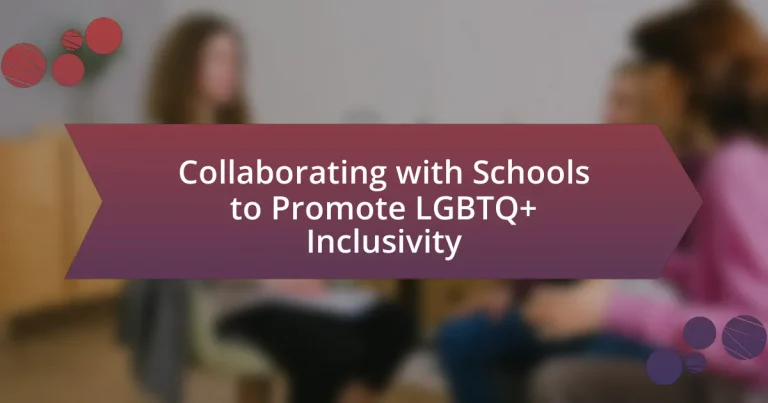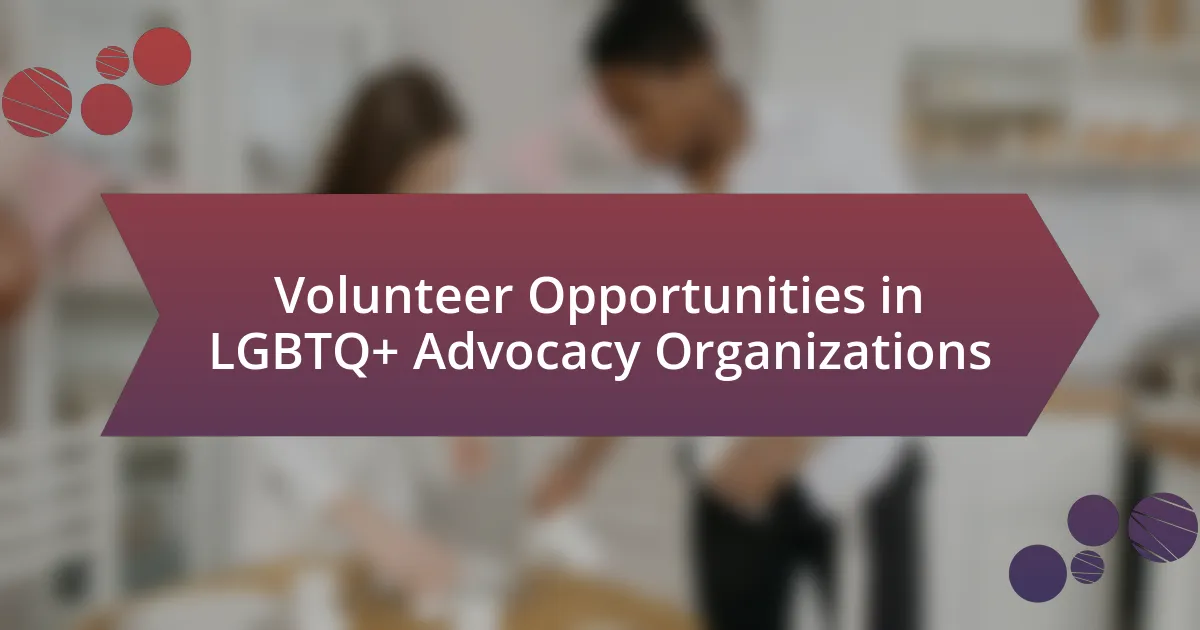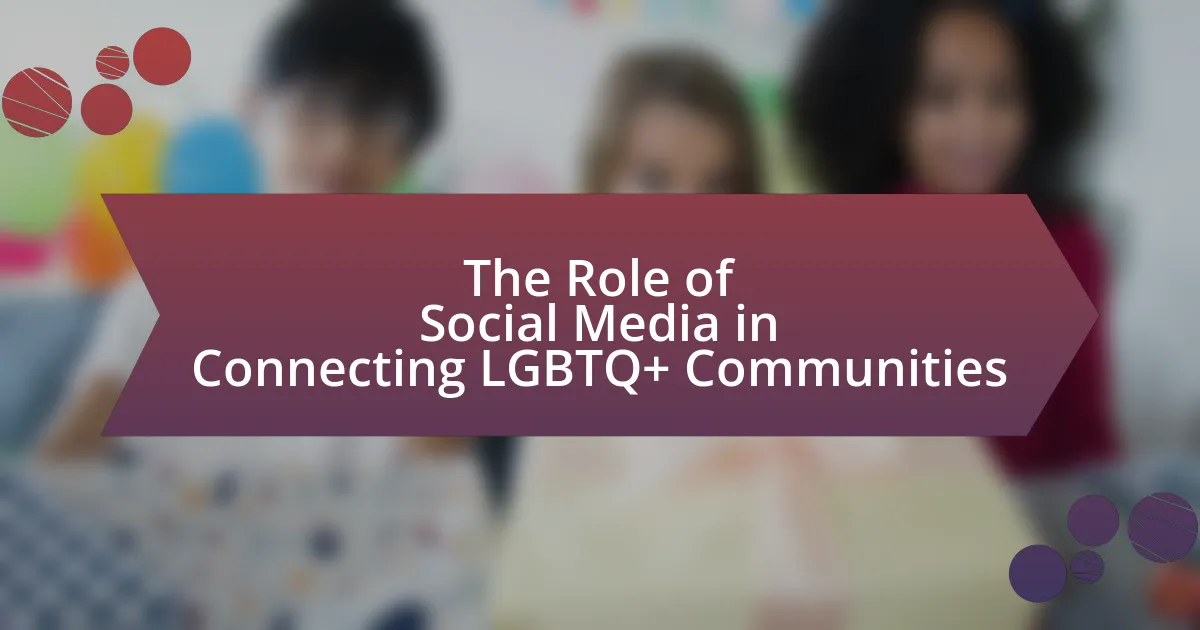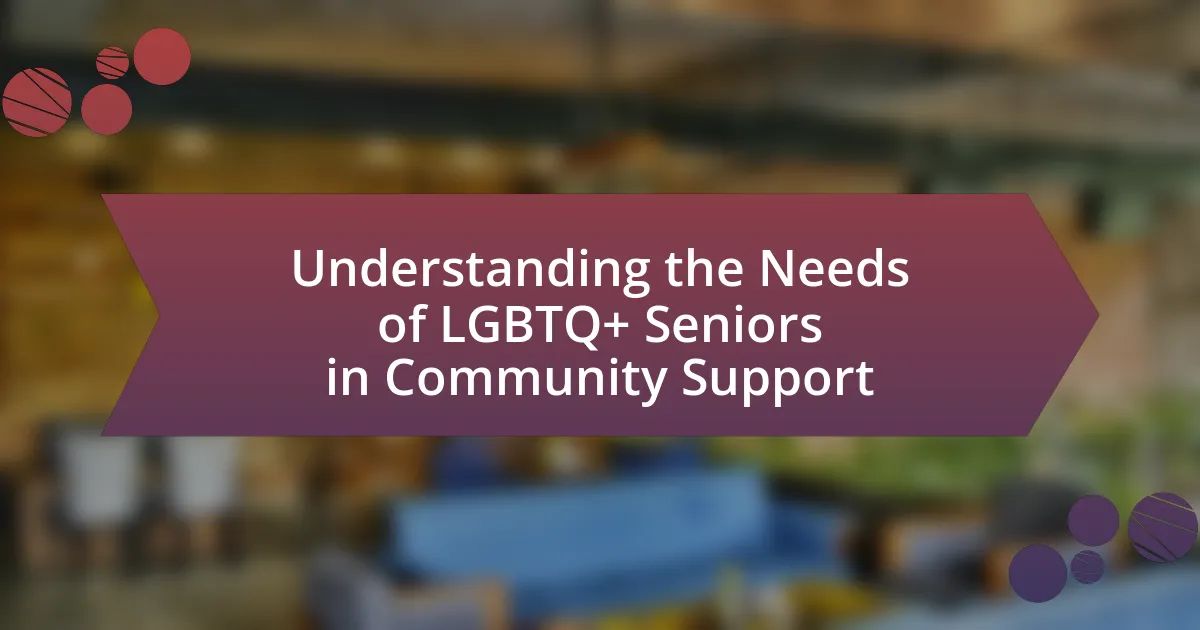Collaborating with schools to promote LGBTQ+ inclusivity involves creating programs and policies that ensure a safe and supportive environment for LGBTQ+ students. Key components include training educators, implementing inclusive curricula, and establishing support systems like Gay-Straight Alliances. Research shows that such collaborations lead to reduced bullying and improved mental health outcomes for LGBTQ+ students, benefiting the entire school community by fostering empathy and understanding. Effective collaboration requires clear communication, mutual respect, and active engagement from various stakeholders, including educators, parents, and community organizations. Schools can enhance inclusivity through partnerships with LGBTQ+ organizations, ongoing training, and regular assessments of their inclusivity efforts.

What does collaborating with schools to promote LGBTQ+ inclusivity entail?
Collaborating with schools to promote LGBTQ+ inclusivity entails developing programs and policies that foster a safe and supportive environment for LGBTQ+ students. This collaboration typically involves training educators on LGBTQ+ issues, implementing inclusive curricula that reflect diverse identities, and establishing support systems such as Gay-Straight Alliances. Research indicates that schools with inclusive policies see a reduction in bullying and improved mental health outcomes for LGBTQ+ students, highlighting the effectiveness of such collaborations in creating a more equitable educational experience.
Why is LGBTQ+ inclusivity important in schools?
LGBTQ+ inclusivity is important in schools because it fosters a safe and supportive environment for all students, promoting mental health and academic success. Research indicates that LGBTQ+ students who attend inclusive schools experience lower rates of bullying and harassment, leading to improved emotional well-being and higher academic performance. For instance, a study by GLSEN found that LGBTQ+ students in schools with inclusive policies reported a 30% decrease in victimization and a 20% increase in their overall sense of belonging. This inclusivity not only benefits LGBTQ+ students but also cultivates empathy and understanding among all students, preparing them for a diverse society.
What are the impacts of inclusivity on LGBTQ+ students?
Inclusivity positively impacts LGBTQ+ students by fostering a supportive environment that enhances their mental health and academic performance. Research indicates that LGBTQ+ students in inclusive settings report lower levels of depression and anxiety, leading to improved overall well-being. A study published in the Journal of School Psychology found that schools with inclusive policies and practices saw a 30% decrease in bullying incidents against LGBTQ+ students, which correlates with higher self-esteem and better academic outcomes. Furthermore, inclusive curricula that represent LGBTQ+ histories and contributions help students feel validated and accepted, promoting a sense of belonging and community.
How does inclusivity benefit the entire school community?
Inclusivity benefits the entire school community by fostering a supportive environment that enhances academic performance and social cohesion. Research indicates that inclusive schools lead to improved student engagement and lower dropout rates, as students feel valued and accepted. For instance, a study published in the Journal of Educational Psychology found that schools with inclusive practices reported a 20% increase in student satisfaction and a significant reduction in bullying incidents. This supportive atmosphere not only aids LGBTQ+ students but also cultivates empathy and respect among all students, ultimately enriching the educational experience for everyone involved.
What are the key components of effective collaboration?
The key components of effective collaboration include clear communication, mutual respect, shared goals, and trust among participants. Clear communication ensures that all parties understand their roles and responsibilities, which is essential for coordination. Mutual respect fosters an inclusive environment where diverse perspectives are valued, particularly important in promoting LGBTQ+ inclusivity. Shared goals align the efforts of all collaborators, creating a unified direction for initiatives. Trust builds a foundation for open dialogue and risk-taking, which is crucial for addressing sensitive topics like LGBTQ+ issues in schools. These components are supported by research indicating that effective collaboration leads to improved outcomes in educational settings, particularly in fostering inclusivity and understanding among students.
Who are the stakeholders involved in promoting inclusivity?
The stakeholders involved in promoting inclusivity include educators, school administrators, parents, students, community organizations, and policymakers. Educators play a crucial role by implementing inclusive curricula and fostering a supportive classroom environment. School administrators are responsible for creating policies that promote inclusivity and ensuring compliance with anti-discrimination laws. Parents contribute by advocating for inclusive practices and supporting their children’s diverse identities. Students are vital as they can influence peer culture and advocate for their rights. Community organizations often provide resources, training, and support for schools to enhance inclusivity. Policymakers are essential in establishing legal frameworks that protect and promote the rights of marginalized groups, including LGBTQ+ individuals.
What strategies can schools implement for collaboration?
Schools can implement strategies such as forming partnerships with LGBTQ+ organizations, creating inclusive curricula, and establishing support groups for students. Forming partnerships with organizations like GLSEN can provide resources and training for staff, enhancing their ability to support LGBTQ+ students. Creating inclusive curricula that reflect diverse identities fosters a sense of belonging and understanding among all students. Establishing support groups, such as Gay-Straight Alliances, encourages collaboration among students and provides safe spaces for discussion and advocacy. These strategies have been shown to improve school climate and student well-being, as evidenced by research indicating that schools with inclusive practices report lower rates of bullying and higher levels of student engagement.

How can schools effectively engage with LGBTQ+ organizations?
Schools can effectively engage with LGBTQ+ organizations by establishing partnerships that promote inclusivity and support for LGBTQ+ students. These partnerships can include collaborative events, educational workshops, and resource sharing, which help create a safe and affirming environment. For instance, schools can invite LGBTQ+ organizations to conduct training sessions for staff and students, enhancing awareness and understanding of LGBTQ+ issues. Research indicates that schools with active LGBTQ+ support programs report lower rates of bullying and higher levels of student well-being, demonstrating the positive impact of such collaborations.
What types of partnerships can schools form with LGBTQ+ organizations?
Schools can form various types of partnerships with LGBTQ+ organizations, including educational collaborations, support services, and advocacy initiatives. Educational collaborations may involve workshops, training sessions, and curriculum development that focus on LGBTQ+ issues, fostering a more inclusive environment. Support services can include counseling and resources for LGBTQ+ students, ensuring their mental health and well-being are prioritized. Advocacy initiatives may involve joint efforts to promote policy changes within the school system that protect LGBTQ+ rights and enhance inclusivity. These partnerships are essential for creating a safe and supportive atmosphere for all students, as evidenced by studies showing that inclusive environments improve student outcomes and reduce bullying.
How can these partnerships enhance educational programs?
Partnerships can enhance educational programs by providing resources, expertise, and support that promote LGBTQ+ inclusivity. These collaborations often involve community organizations, advocacy groups, and educational institutions working together to develop curricula that reflect diverse perspectives and experiences. For instance, research shows that schools with partnerships focused on inclusivity report improved student engagement and a decrease in bullying incidents, as highlighted in the 2021 report by GLSEN, which found that LGBTQ+ inclusive curricula lead to safer school environments. By integrating these partnerships, educational programs can foster a more accepting atmosphere, ultimately benefiting all students.
What resources do LGBTQ+ organizations provide to schools?
LGBTQ+ organizations provide various resources to schools, including educational materials, training programs, and support networks. These resources aim to foster an inclusive environment for LGBTQ+ students and staff. For instance, organizations like GLSEN offer lesson plans and guides that help educators address LGBTQ+ issues in the classroom, promoting awareness and understanding. Additionally, training sessions for teachers and staff equip them with the skills to support LGBTQ+ students effectively. Research indicates that schools implementing such resources see improved student well-being and a reduction in bullying incidents, highlighting the positive impact of these initiatives on school culture.
What role do educators play in fostering inclusivity?
Educators play a crucial role in fostering inclusivity by creating a safe and supportive environment for all students, particularly those from marginalized groups such as LGBTQ+ individuals. They implement inclusive curricula that reflect diverse perspectives and experiences, which helps students feel represented and valued. Research indicates that schools with inclusive practices see improved academic outcomes and mental health for LGBTQ+ students, as highlighted in the 2019 GLSEN National School Climate Survey, which found that supportive educators significantly reduce feelings of isolation among these students. By actively promoting acceptance and understanding, educators not only enhance the learning experience but also contribute to a culture of respect and equality within the school community.
How can teachers be trained to support LGBTQ+ students?
Teachers can be trained to support LGBTQ+ students through comprehensive professional development programs that focus on inclusivity, awareness, and advocacy. These programs should include training on LGBTQ+ terminology, the unique challenges faced by LGBTQ+ youth, and strategies for creating a safe and affirming classroom environment. Research indicates that inclusive training can significantly improve teachers’ confidence and competence in addressing LGBTQ+ issues, as evidenced by a study published in the Journal of LGBT Youth, which found that teachers who received such training reported higher levels of support for LGBTQ+ students and a decrease in bullying incidents.
What curriculum changes can promote LGBTQ+ inclusivity?
Curriculum changes that can promote LGBTQ+ inclusivity include integrating LGBTQ+ history and contributions into existing subjects, implementing comprehensive sex education that addresses diverse sexual orientations and gender identities, and adopting inclusive language and materials that reflect LGBTQ+ experiences. Research indicates that inclusive curricula can lead to a more accepting school environment; for instance, a study by GLSEN found that schools with LGBTQ-inclusive curricula reported lower levels of bullying and harassment. Additionally, incorporating diverse perspectives fosters empathy and understanding among students, which is essential for creating a supportive educational atmosphere.

What challenges might arise in promoting LGBTQ+ inclusivity in schools?
Promoting LGBTQ+ inclusivity in schools may face challenges such as resistance from parents and community members, lack of training for educators, and insufficient resources. Resistance often stems from cultural or religious beliefs that oppose LGBTQ+ acceptance, which can lead to conflicts between school policies and community values. Additionally, many educators may not receive adequate training on LGBTQ+ issues, resulting in a lack of understanding and support for students. Furthermore, schools may struggle with limited funding and resources to implement comprehensive inclusivity programs, which can hinder effective policy execution. These challenges can create an environment where LGBTQ+ students feel unsupported and unsafe, impacting their overall well-being and academic performance.
How can schools address resistance to LGBTQ+ inclusivity initiatives?
Schools can address resistance to LGBTQ+ inclusivity initiatives by implementing comprehensive education programs that promote understanding and acceptance. Research indicates that educational interventions, such as workshops and training sessions for staff and students, significantly reduce prejudice and foster a more inclusive environment. For instance, a study published in the Journal of School Psychology found that schools that integrated LGBTQ+ topics into their curricula saw a 30% decrease in bullying incidents related to sexual orientation. Additionally, engaging parents and community members in discussions about the importance of inclusivity can help mitigate resistance, as informed stakeholders are more likely to support these initiatives.
What are common misconceptions about LGBTQ+ inclusivity?
Common misconceptions about LGBTQ+ inclusivity include the belief that it only benefits LGBTQ+ individuals, that it undermines traditional values, and that it is unnecessary in certain environments. Many people think that promoting inclusivity solely serves the LGBTQ+ community, but research shows that inclusive environments foster respect and understanding for all students, enhancing overall school culture. Additionally, some argue that LGBTQ+ inclusivity threatens traditional family structures; however, studies indicate that inclusive policies do not harm family values but rather promote acceptance and diversity. Lastly, the notion that LGBTQ+ inclusivity is unnecessary in certain regions is misleading, as data from organizations like GLSEN reveals that LGBTQ+ youth face discrimination and bullying in schools across all demographics, highlighting the need for inclusive practices everywhere.
How can schools create a safe space for discussions on inclusivity?
Schools can create a safe space for discussions on inclusivity by implementing comprehensive training programs for staff and students that focus on diversity, equity, and inclusion. These programs should include workshops that educate participants about LGBTQ+ issues, fostering empathy and understanding. Research indicates that schools with trained staff report higher levels of student comfort in discussing inclusivity topics, as evidenced by a study from GLSEN, which found that 90% of LGBTQ+ students felt safer in schools with supportive staff. Additionally, establishing clear policies against discrimination and bullying, alongside creating dedicated safe spaces or clubs for LGBTQ+ students, further reinforces an environment where open dialogue can thrive.
What best practices can schools adopt for successful collaboration?
Schools can adopt several best practices for successful collaboration, including establishing clear communication channels, fostering inclusive environments, and engaging stakeholders actively. Clear communication ensures that all parties understand their roles and responsibilities, which is crucial for effective teamwork. Fostering an inclusive environment allows diverse perspectives to be heard, promoting a culture of respect and understanding. Engaging stakeholders, such as parents, community organizations, and LGBTQ+ advocacy groups, enhances collaboration by bringing in varied expertise and resources. Research indicates that schools implementing these practices see improved student outcomes and a more supportive atmosphere, as highlighted in the study “Creating Inclusive Schools: A Guide for Educators” by the National Education Association.
How can schools measure the effectiveness of their inclusivity efforts?
Schools can measure the effectiveness of their inclusivity efforts by utilizing surveys and feedback mechanisms to assess student and staff perceptions of inclusivity. For instance, implementing anonymous surveys can provide quantitative data on the experiences of LGBTQ+ students, revealing areas of improvement and success. Research indicates that schools with regular feedback loops see a 20% increase in reported feelings of safety and belonging among LGBTQ+ students, as noted in the 2021 GLSEN National School Climate Survey. Additionally, tracking participation in inclusivity programs and analyzing disciplinary data can further highlight the impact of inclusivity initiatives.
What ongoing support is necessary for sustaining inclusivity initiatives?
Ongoing support necessary for sustaining inclusivity initiatives includes continuous training for educators, regular assessment of inclusivity policies, and active engagement with the LGBTQ+ community. Continuous training equips educators with the skills to address diverse student needs effectively, as evidenced by studies showing that professional development leads to improved teacher attitudes towards inclusivity. Regular assessments ensure that policies remain relevant and effective, with research indicating that schools that frequently evaluate their inclusivity measures see higher student satisfaction and engagement. Active engagement with the LGBTQ+ community fosters a supportive environment, as collaboration with local organizations has been shown to enhance resources and visibility for LGBTQ+ students, thereby promoting a culture of acceptance and understanding.





